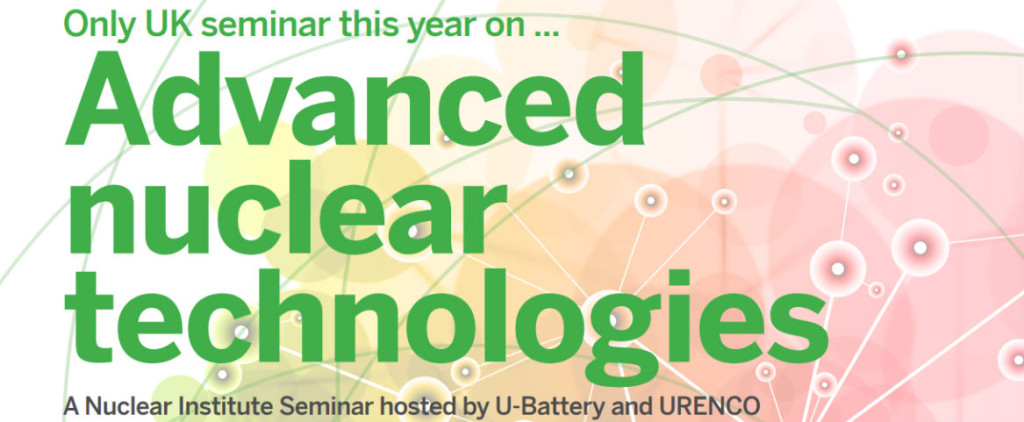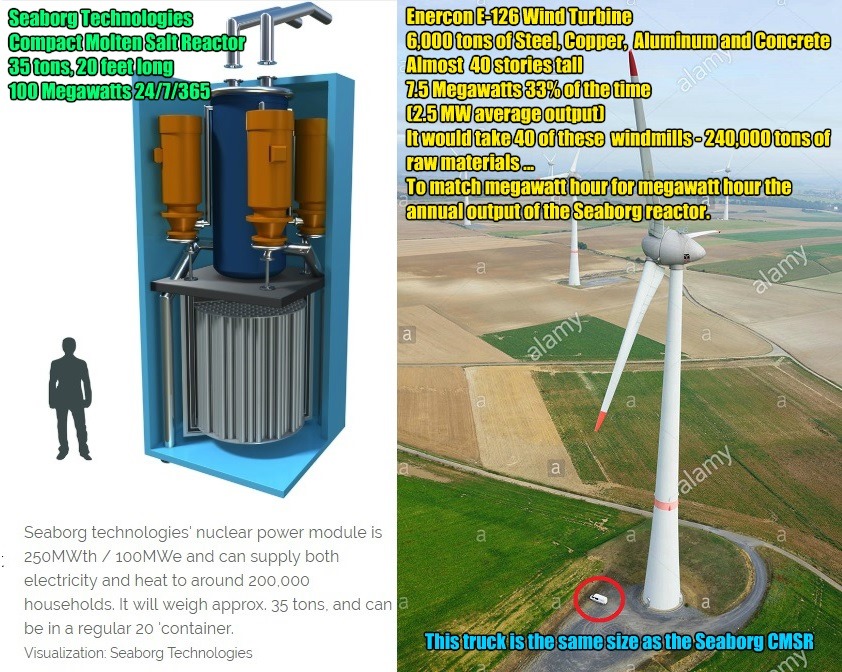Advanced Nuclear Has Promise, But…

There’s an important difference, however: the one on the right actually exists, and the one on the left doesn’t. Now, some may find that trivial, but I don’t.
Advanced nuclear has a great deal of promise, but the promise of cool new technology in the future shouldn’t negate the value of wind, currently 6.6% of the overall US grid-mix (more than 30% in certain states); that’s the displacement of a lot of CO2, methane, cadmium, selenium, mercury, arsenic, and dozens of different radioactive isotopes, which are all either destroying our environment or killing our people.
Further discussion:
Friend: That’s only because the one on the left receives no subsidies… mostly because the one on the right is less scary to non-scientific people.
Me: Your second point is 100% correct; nuclear terrifies non-scientific people, and that is a shame, as we’re about to learn to our horror as our globe continues to warm due to the carbon footprint of energy generation.
Your first point is incorrect, however. There would be no nuclear industry at all if it weren’t for subsidies, and most of the R&D on advanced nuclear is publicly funded.
And here’s yet another way to look at it: The competition for wind energy is being heavily subsidized, making wind less competitive. In particular, no one is requiring the fossil fuel industry to pay for the damage they’re doing to our planet and to our bodies. As noted here, http://www.2greenenergy.com/…/29/harvards-report-on-coal/, Harvard Medical School estimates the annual damage to our lungs from coal alone to be roughly $500 billion.


Craig,
There’s nothing wrong with being a fan of Wind Energy. However, why do you feel a desperate need to distort, lie or be ingenuous about its attributes and the downsides of alternates power generation.
Clean(er)Coal generation is actually far more environmentally beneficial than Solar, and even wind generation. It’s also more reliable, economical and suitable for industrial usage.
The cost in the US for Uranium fueled energy is rendered noncompetitive by the absurdly complicated regulatory regime.
The actual cost of building a mini-Thorium reactor is less than $500 million for 400mw. The plant is 100% safe. Unlike Uranium, there is virtually no nuclear waste and the half life of Thorium is less than 300 years. Thorium is cheap, non polluting to mine and very stable.
Yet the US regulatory authority requires the same safeguards and permission process as a large “weapons grade” uranium reactor.
To even before construction can begin, the compliance costs would be more than $400 million and take up to 12-15 years to be finalized.
This is the primary reason why (apart from the anti-nuclear paranoia) no new Advanced nuclear plants are being built in the US. The pressure on natural gas availability and increasing price should see nuclear projects becoming more attractive.